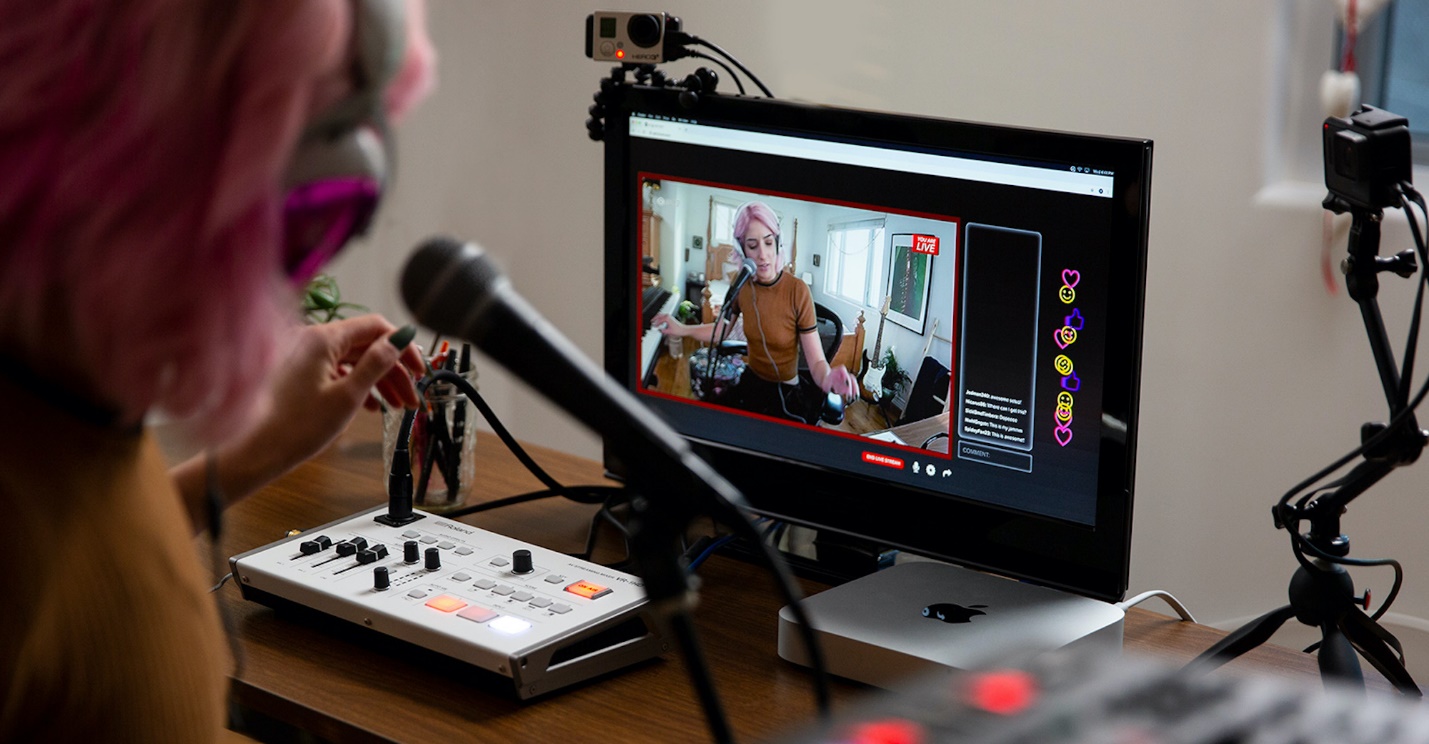If by any chance you are having a video-call on Zoom, starting your eSports career by streaming on Twitch or broadcasting a show online, you understand how irritating a laggy Livestream can be.All video streamers have to deal with it. Here are a few tried and tested tips to help smooth out, speed up, and minimize your video streaming issues. (Note: I use a Mac, but I also added a few tips for Windows users).You don’t necessarily need a professional set up like a video gamer to run a good-looking Livestream.Plug directly into your modem
This may look like the most simple and obvious one, but we have many new live streamers out there. And honestly, even silvery Livestream vets such as myself forget to plug in directly to the modem seldom.
Table of Contents
video live-streaming
Laggy live streams most of the time are caused by one of two things: you’re either overloading your computer or having a problem with your internet connection. If possible, it is preferred to stream using a wired connection (LAN). By using wired connections, your video will speed up and, on the other hand, is more reliable than a Wi-Fi connection.
If you use a MacBook, you will not have an ethernet port, but you can always use Thunderbolt to Ethernet Adapter, and it is very cheap (less than $30)Sometimes because of the distance from your device to the modem, the connection drops. You can fix that by buying a mesh Wi-Fi System. These devices will boost your Wi-Fi signal up to 5x and will also extend its range. They can be a bit expensive, though. The starting price is $200.
Check your stream settings.
It’s not that you can do much if the cause of your Livestreaming problems is the internet providers. If you want to stream live videos in HD, you will need at least 4Mbps.(Speedtest can help you see your internet speed). If you are not getting that much internet from your internet provider, you can always upgrade your monthly plan or try a different service provider.
If that is not an option for you, you can try changing some settings on the software you are using to Livestream. Now you should know that not all the streaming apps will allow you to do this, but just for this example, let’s go with the most popular app (also it is free): OBS-OBS is a free, open-source live streaming program and is all you need to run a pro-level Livestream on a PC.
If you see your live stream is lagging, just change your output settings in OBS to 720p (Resolution: 12880×720). All YouTubers are uploading on 4K footage now; at the very least, you could stream live video in 1080p. To be clear, most of your viewers will not even notice the difference in output, and particularly on a Livestream. If your choices are 720p or a choppy production, I guarantee they will prefer the former.
Besides that, you can also put your video bitrate down. Bitrates are basically how many bits you are sending and how quickly they’re being sent. For a smooth picture, your bitrate should be higher. If your streaming video quality is set to 720p, your bitrate rate should be set to around 35000kb per second. Now it should give you a great image.
These settings help you with internet issues, but they will also be a boost if your problems stem from CPUs performance. Also, these settings work for all other programs if they allow you to change settings.
Choosing the right software
No matter if you’re using Mac or Windows, there are a lot of free software for Livestreaming, especially if you’re just starting. Using this free software, you can run some pretty intensive video broadcasts. However, there is a learning curve. And, as you saw earlier, when I ran down just a few of them, there are some pretty intricate settings options. It would help if you always chose the software that allows you to change the settings that need to be changed for your personal need.
Using an external drive
Using an external drive was a tip that was recommended to me just recently by a fellow streamer.After a bit of research to see what external drive would best handle the situation. I hopped on a call with the product team at Western Digital, I settled on G-Technology’s G-Drive USB-C external drive. Video production and backup storage is the most common use of this product.
They are known for very fast, reliable, and high-performance drivers. They cost around $150. If you are on a budget, a portable hard drive called MyPassport costs a little over $50.
When I got my MacBook Pro, I ordered it with live streaming and video editing in mind, so by my experience with it, I can say that I have a reasonably fast computer. However, running a stream from a quick Solid-State drive would be faster than doing it on an older computer and adding a slow internal hard drive.
In a test I run recently, I switched them up. I started the live stream off the internal drive and other apps I use while streaming, like Google Chrome, off the G-Drive. As we all know, Chrome is known for taking a lot of disk space. With the external drive taking a load off my MacBook, I heard the internal fan’s hum, which during a video stream can get pretty loud, was much quieter this time. Saving or backing up my Livestream recordings to the external drive also helped me deal with slowdown on my MacBook and free up hard disk space.
And if you’re a Mac user, you don’t need to install an OS on it if you want to run apps off your external drive. Also, you don’t need to make it bootable. I just had to drag and drop applications from my SSD to the G-Drive. All you need to run the software is packaged inside, making things very easy to move around.
An external drive could be an affordable solution, especially if you can’t go out and buy a new computer with maxed out specifications.
External drives
- G-Technology G-Drive USB-C ($149)
- SanDisk Extreme Portable SSD ($79)
- Western Digital MyPassport HD ($65)
Is it time for a new Computer?
Maybe you have a PC that is about a decade old, and you are more than ready to buy a new one. What is the right choice for live streaming?
The answer is: It depends. Nearly any modern computer can do the work if you’re looking to go live talking into a web camera. Even your Android or iPhone device can do the job for that. But, if you’re going for something more advanced, let’s say a Livestream show with guests on it, layers of graphics, or even game streaming, there are quite a lot of specs that you need to pay attention to.
My laptop has a processor Intel Core i7 quadcore with 16GB of RAM, and it quickly does everything, but the fan will often go crazy and make a lot of noise.
I recommend your new device should have at least 16GB of RAM. There are a lot of guides that say you can do it with 8GB of RAM, but frankly, don’t listen to that. Even smartphones now have more RAM than that.
If you can, go with 16GB of RAM. This will help you avoid choppiness and slowdowns, especially when multitasking, which you will need a lot. If you are gaming on Twitch, you’ll want even more than 16 GB.
If you are looking to build a cheap PC, a good budget processor is the AMD Ryzen 5 2600 ($150).
Delete useless stuff
I’m sure you don’t even know how many applications are running in your computer’s background right now. It would help if you closed out all those background processes that aren’t necessary. What you need to run your stream should be the only things taking up precious memory, CPU, and disk space. Without even knowing it, you might have apps like Google Backup and Sync transferring large files over your internet connection, slowing down your upload speeds.
You can use these few simple tips to enhance your live streaming experience. They should help you get rid of laggy streams or at least make the issue bearable











